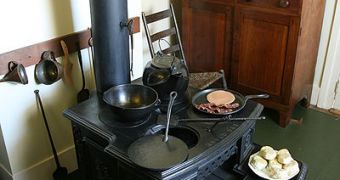A smart mixture of passive and active solar energy, correlated with the usage of wood stoves and geothermal power, appears to be the winning combination for those who want to make their homes energy-efficient.
As winter approaches, household owners might consider improving their heating systems, while going green and paying less for what they use. Only a few people enjoy low temperatures, and probably even fewer are pleased with what staying warm is currently costing them.
Passive solar power is quite easy to implement, but the best means of exploiting its potential have to be outlined before you actually start building your house.
Extra efficient thermal mass materials such as stone or concrete placed in the structure of a building can capture heat during the day and release it indoors at night.
Also, it is important for a house or a commercial building to benefit from the presence of large, south-oriented windows that protect the inside space from increasing temperatures on the hot days of summer, but also manage to keep their inhabitants warm and cozy during winter.
Active solar power can become the main source of energy in green households. Their owners can stick to their their budget while relying on eco-friendly collectors placed on the roof and facing southward, in most cases. Such a system captures sunlight and raises the temperature of air and liquid that goes back inside the house.
Since it is in favor of the environment, governments all across the globe offer tax credits to stimulate the development of active solar networks. More powerful than passive solar techniques, the active ones can even change the way you warm your water supply.
The fact that experts included wood stoves to their winning combination of green heating alternatives might take a few people by surprise.
It is generally known and accepted that wood stoves are a tremendous source of air pollution, one of the main factors responsible for the increased mortality rate in developing countries. But innovative technology makes these items more reliable nowadays.
Since the new products generate less ash and pollution, experts state that it is now safe to consider wood stoves our best friends during the cold season. They offer a low-cost heating alternative and are not picky when it comes to renewable resources. Improved stoves can function efficiently while relying on sawdust and scraps coming from discarded wood.
All of the above might raise temperatures in homes by a few degrees, but the cycle isn't complete unless we add geothermal heat. A geothermal heat pump exploits the underground growing temperatures in order to improve the already existing heating system.
If you plan on using pumps located on the ground, expect to pay more. Such an investment might be recouped within a few years, taking into account that the pipe system has a life expectancy of 25 years.

 14 DAY TRIAL //
14 DAY TRIAL //